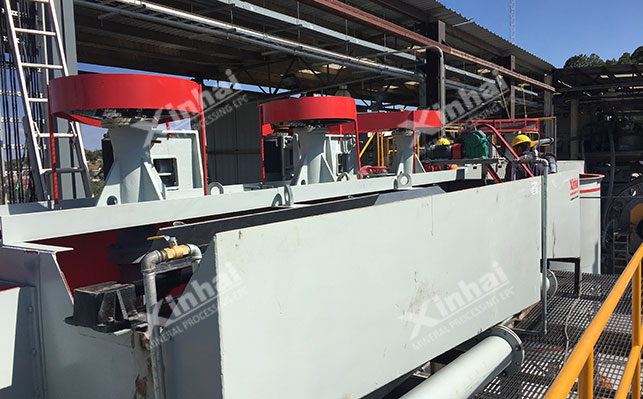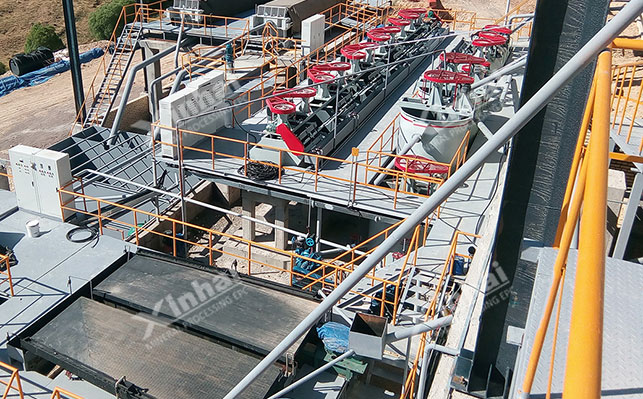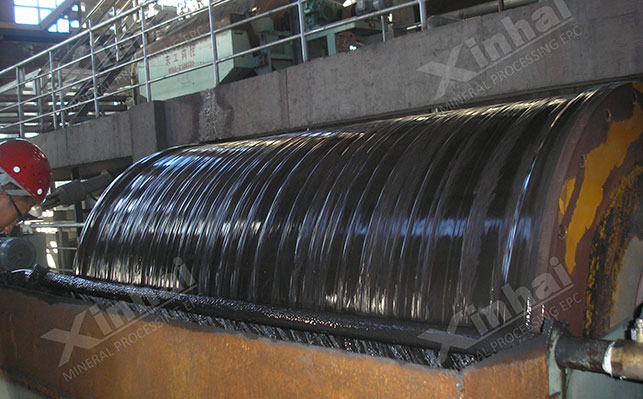
15311826613
Click to add WeChatWith the rapid development of my country's economy, the demand for lead, zinc and silver metals continues to increase, so it is of great significance to strengthen the comprehensive utilization of lead, zinc and silver mineral resources. The sulfur - containing lead - zinc silver ores beneficiation methods flotation, gravity separation - flotation, flotation - magnetic separation, and silver ore Beneficiation methods.
Flotation is widely used and has good effect in the selection process of polymetallic sulfide ores, especially when lead-zinc sulfide ores contain associated silver, flotation is often used to enrich silver minerals into lead concentrate for recovery. Flotation methods mainly include preferential flotation and mixed flotation.

This method is based on the difference in floatability of each sulfide mineral in the ore, and the minerals are floated out from the slurry in turn to obtain a single sulfide concentrate and tailings. When the lead-zinc sulfide ore contains associated silver, a combined collector is added in a 1:1 ratio in the priority flotation process to preferentially float the lead mineral. Based on the lead affinity of silver, silver minerals tend to be preferentially enriched in the lead concentrate. If you want to improve the quality of lead concentrate, you can also add a lead fast selection on the basis of the lead-zinc priority flotation process. Compared with the original process, the grade of lead concentrate can be significantly improved. If the organic carbon content in the lead-zinc-silver ore is high, the first flotation decarbonization and then the priority flotation process of zinc suppression and lead flotation can be adopted to obtain better mineral processing indicators.
This process is generally suitable for sulfide lead-zinc-silver ores with simple mineral composition, high ore grade, coarse embedded particle size, and large differences in the flotation of each target mineral.
The mixed flotation method uses sulfide ore collectors to simultaneously float lead, zinc minerals and associated silver minerals to obtain lead-zinc mixed concentrates and waste tailings, and then separates the mixed concentrates to obtain single lead concentrates and zinc concentrates. If the mixed concentrate is difficult to separate or the separation effect is poor, no subsequent mineral separation will be carried out, and smelting will be directly carried out to obtain a single metal. In the process of separating the lead-zinc mixed concentrate, the associated silver will be more enriched in the lead concentrate.
If the flotation object is the leaching residue of the lead-zinc-silver mine, due to the very fine particle size of the leaching residue and the large proportion of fine particles, the pulp will produce a lot of mud, which will reduce the difference in the floatability of lead-zinc minerals, and the priority flotation process cannot be achieved. Therefore, it is recommended to use a mixed flotation process to obtain better mineral processing indicators. This method uses a smaller amount of sulfur-nitrogen and butyl xanthate combination as collectors, ATTA as an activator for the target mineral, and does not require the use of zinc mineral inhibitors, which can also reduce the cost of mineral processing.
This process is generally suitable for ores with low target mineral content, fine embedded particle size, and close replacement relationship between multiple minerals.

Sulfide lead-zinc-silver polymetallic ore gravity separation-flotation method uses gravity separation method to pre-enrich the target mineral, improve the ore grade when entering flotation, reduce the flotation processing volume, and thus increase the total processing volume of the mine.
For lead-zinc sulfide ores with high silver content, the tailings can be first classified by a 0.074mm classifier, and then the two particle sizes can be enriched by a shaking table. Through these two operations, part of the gangue can be discarded, reducing the subsequent grinding costs, while strengthening the enrichment of valuable elements such as lead, zinc, and silver, and improving the effect of subsequent flotation operations. When silver is associated with lead-zinc sulfide ore, the recovery rate of precious metal silver can be improved by using a combined gravity separation-flotation process, that is, first using a tower spiral concentrator and a shaking table to select coarse precious metals, and then flotation to recover lead-zinc minerals and associated silver minerals.
When there are coarse-grained silver minerals in sulfide lead-zinc ores, the combined gravity-flotation process can obtain more satisfactory separation indicators than the single flotation method.

For the situation where sulfide lead-zinc-silver polymetallic ores contain magnetic minerals, it is often difficult to obtain satisfactory mineral processing indicators by only using flotation-magnetic separation. The combined flotation-magnetic separation process can solve this problem well.
When the sulfide lead-zinc-silver polymetallic ore contains silver, chromium, and iron minerals, magnetic separation can be applied to the mineral processing process of the sulfide ore. First, the sulfide ore is floated, and the magnetic minerals are recovered from the flotation tailings through weak magnetic separation, and polymetallic lead-zinc-silver sulfide ore resources such as zinc, silver, chromium, and iron can be obtained. If the content of pyrrhotite in the sulfide lead-zinc-silver polymetallic ore is high, the pyrrhotite will increase the difficulty of subsequent zinc flotation operations. Therefore, before flotation, weak magnetic separation is used to remove pyrrhotite from the ore, and then mixed flotation of copper and lead is performed, zinc is flotated from the lead tailings, and finally the associated silver minerals enriched in the copper-lead concentrate are separately floated, which can successfully achieve the comprehensive recovery of difficult-to-select polymetallic sulfide ores.
The above are the three commonly used process flows in the selection of sulfide lead-zinc-silver polymetallic ore. It is recommended that when choosing a process flow, in addition to considering the composition of the minerals in the ore and the properties of the ore, each mine owner should also choose a professional beneficiation team to customize a beneficiation plan that meets the mine conditions to ensure ideal economic benefits.